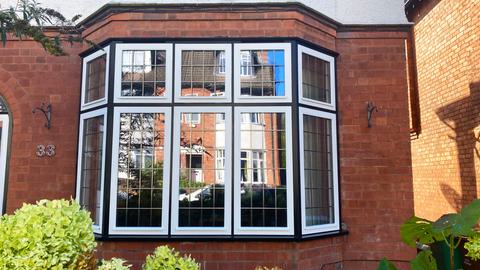Why should I consider triple glazed windows?
Whether it's rising energy prices or the chilly British winter, more and more people are considering the benefits of triple Triple glazing. Originally created to tackle the harsh Scandinavian winters, triple glazing simply comprises three panes of glass in one unit with gaps between, each filled with an inert gas such as Argon.
As though by magic, triple glazing reduces the amount of heat loss through a window whilst still allowing heat into the room from the sun, a process also referred to as solar gain. This is achieved by the two outer panes of glass in the unit, which have a low emissivity, combined with the extra air gap filled with Argon. Most glass units installed are double glazed and have a U-value of around 1.3 to 1.0, at best. On the other hand, our triple glazed units can achieve a U-value of 0.6 using Toughened glass centre pane in all situations.
Why you should consider triple glazed windows
- Great sound insulation: Sound insulation is much better with the extra pane of glass, as compared to a double glazed unit, due to the additional barrier to external sound. This is always a consideration if you live near a busy road or motorway junction.
- Bigger glass size: Having triple glazing allows you to have much bigger windows and more light in your house, without worrying about the overall U-Value of your building. This is due to the astonishing increase in thermal insulation.
- Thermal insulation: On top of triple glazing offering exceptionally low U-Value with our 0.6 U units, it also prevents those cold, draughty areas near the windows during winter and at night, yet still allowing a controlled amount of solar gain throughout the summer.
- Better security: Adding an extra 4mm centre pane of Toughened glass reinforces the physical barrier between your home and outside.
Triple glazing means a higher internal surface temperature
Let’s compare some results. If the temperature outside is very cold and it’s 21°c indoors, the following occurs:
The internal surface temperature will be around 1°C on a single glazing window.
The surface temperature will be around 11°C on a double glazing window (old technology).
The surface temperature is likely to be about 16°C on a more modern energy-efficient double glazed window.
On a triple glazed window, with a centre pane U-Value of just 0.6 like ours, the temperature is 18°C.
Upgrading timber windows on listed buildings
Our team will work alongside your local authority and architect to manufacture timber windows suitable for listed buildings and conservation areas.
We have decades of experience installing timber doors, windows, conservatories, porches and orangeries on listed buildings. So we understand the processes and how to manufacture thermal-efficient windows that meet requirements and are perfectly suited to your heritage building.
Our team will work with you to design, manufacture and install, or we can supply only for both domestic and commercial heritage properties. If you'd like to know more, have a look at our listed buildings page.
Timber Windows
